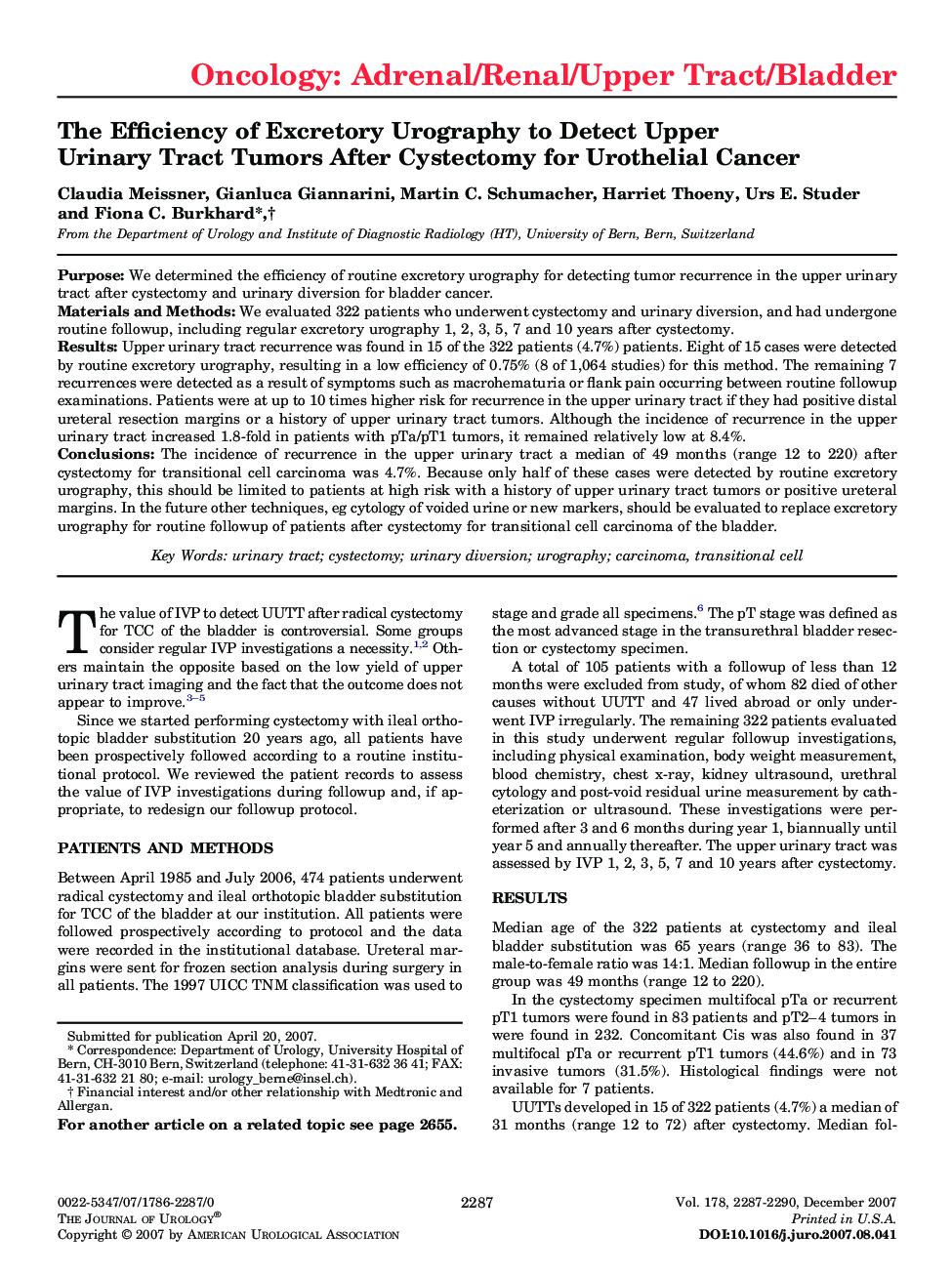| Article ID | Journal | Published Year | Pages | File Type |
|---|---|---|---|---|
| 3873259 | The Journal of Urology | 2007 | 4 Pages |
PurposeWe determined the efficiency of routine excretory urography for detecting tumor recurrence in the upper urinary tract after cystectomy and urinary diversion for bladder cancer.Materials and MethodsWe evaluated 322 patients who underwent cystectomy and urinary diversion, and had undergone routine followup, including regular excretory urography 1, 2, 3, 5, 7 and 10 years after cystectomy.ResultsUpper urinary tract recurrence was found in 15 of the 322 patients (4.7%) patients. Eight of 15 cases were detected by routine excretory urography, resulting in a low efficiency of 0.75% (8 of 1,064 studies) for this method. The remaining 7 recurrences were detected as a result of symptoms such as macrohematuria or flank pain occurring between routine followup examinations. Patients were at up to 10 times higher risk for recurrence in the upper urinary tract if they had positive distal ureteral resection margins or a history of upper urinary tract tumors. Although the incidence of recurrence in the upper urinary tract increased 1.8-fold in patients with pTa/pT1 tumors, it remained relatively low at 8.4%.ConclusionsThe incidence of recurrence in the upper urinary tract a median of 49 months (range 12 to 220) after cystectomy for transitional cell carcinoma was 4.7%. Because only half of these cases were detected by routine excretory urography, this should be limited to patients at high risk with a history of upper urinary tract tumors or positive ureteral margins. In the future other techniques, eg cytology of voided urine or new markers, should be evaluated to replace excretory urography for routine followup of patients after cystectomy for transitional cell carcinoma of the bladder.
